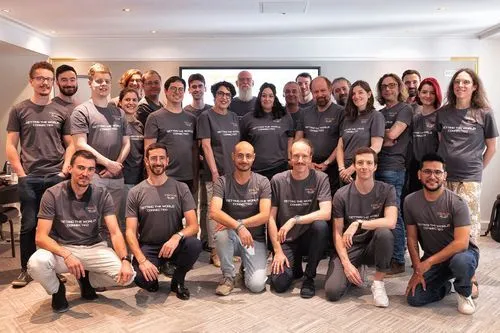VDI vs RDP: A Practical Decision Framework (Costs, Risks & How To Supercharge RDS With or Without VDI)
VDI vs RDP: a practical decision-making framework to examine costs, risks and requirements. Discover how to supercharge RDS with or without VDI.
Would you like to see the site in a different language?
RDS TOOLS BLOG
Unattended access in remote support tools like TeamViewer allows IT professionals to maintain and troubleshoot systems without needing someone at the other end to approve every connection. It is a crucial feature for MSPs, IT teams and anyone who manages computers across multiple locations. Below is a step-by-step guide to configuring unattended access in TeamViewer. To wrap up the article, you can compare RDS Tools Remote Support for value-for-money on essential features.
)
1. Download and Install TeamViewer: First, download and install TeamViewer from the official TeamViewer website. During installation, select Personal / Non-commercial use if appropriate.
2. Create a TeamViewer Account: If you do not already have an account, you will need to sign up or log in directly from the TeamViewer interface.
3. Configure Unattended Access: In the TeamViewer interface, click on Remote Control Under Unattended Access choose Set up unattended access Follow the prompts to assign a name to the device and link it to your account.
4. Set a Personal Password: Set a strong personal password that will be used to authenticate connections when accessing the machine remotely. Ensure it is secure and memorable.
5. Finalize the Setup: After assigning the computer and setting the password, your device is ready for unattended access. You can now connect to this computer from anywhere without needing approval from someone at the remote end.
6. Optional - Enable ‘Easy Access’: If desired, enable Easy Access to connect via your TeamViewer account without having to enter a password each time.
7. Security Recommendations:
* Enable Two-Factor Authentication: Add an extra layer of protection by setting up Two-Factor Authentication on your TeamViewer account.
* Regularly Update Software: Ensure both your TeamViewer software and operating systems are up-to-date with the latest security patches.
For those looking for alternatives, RDS Remote Support offers a robust solution for both attended and unattended access across multiple operating systems, including Windows and macOS. Unlike TeamViewer, RDS-Remote Support is particularly advantageous for managing servers and multiple machines within an RDS (Remote Desktop Services) infrastructure.
RDS Remote Support allows for:
* Unattended Maintenance: IT professionals can schedule server updates or troubleshoot client issues even when they are not physically present.
* Wake-on-LAN (WoL): A notable feature introduced in the latest version is WoL , which lets administrators remotely power on computers that are turned off or in sleep mode. This enhances productivity, ensuring remote access at any time without human intervention at the endpoint.
The RDS-Remote Support also offers several enhancements like multi-session capability and multi-monitor support making it a versatile option for IT administrators and support teams who need flexibility and security.
* Security and Compliance: RDS-Remote Support ensures end-to-end TLS encryption for all connections, providing peace of mind for IT professionals concerned about data breaches.
* Efficient Workflow: Its command-line access and ability to manage multiple devices through a single interface are ideal for administrators handling several systems.
* Cost-Effective: Compared to other remote support solutions, RDS-Remote Support offers competitive pricing, allowing businesses to access premium features at a lower cost.
For additional insights and tutorials on remote support tools, check out the RDS-Tools documentation for setting up unattended access in RDS Remote Support You can also explore our WoL feature to optimise your unattended remote support strategy.
Unattended access is a powerful feature for businesses managing multiple remote systems. With solutions like TeamViewer and RDS Remote Support your organization can reduce downtime, enhance productivity and ensure continuous access to vital systems. Whether you are an MSP, a corporate IT agent or own your own IT business, you can test RDS-Tools Remote Support and any of our software for 15 days entirely free .
Simple, Robust and Affordable Remote Access Solutions for IT professionals.
The Ultimate Toolbox to better Serve your Microsoft RDS Clients.
 Get in touch
Get in touch
